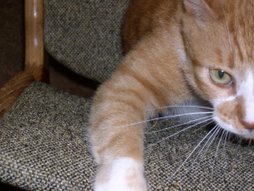HTML 5 Features
Friday, December 19, 2008
HTML 5: A description of what is coming
HTML 5 Features
Sunday, November 30, 2008
Saturday, November 29, 2008
Tango Desktop Project
The Tango Desktop Project exists to help create a consistent graphical user interface experience for free and Open Source software.
Link
Service discovery on a local network
What is Avahi? ¶
Avahi is a system which facilitates service discovery on a local
network. This means that you can plug your laptop or computer into a
network and instantly be able to view other people who you can chat
with, find printers to print to or find files being shared. This kind
of technology is already found in Apple MacOS X (branded Rendezvous, Bonjour and sometimes Zeroconf)
and is very convenient. Avahi is mainly based on Lennart Poettering's
flexmdns mDNS implementation for Linux which has been discontinued in
favour of Avahi.
Wednesday, November 26, 2008
Installing Office 3.0
Link
Screencasts on Linux Made Easy ..Linux Magazine Link
Nov 19, 2008 6:10pm GMT
Dmitri Popov
Need to create a screencast to demonstrate an application feature or
nifty software technique? The easiest way to do this is to install the
recordMyDesktop screen recording utility and the gtk-recordMyDesktop
graphical front-end to it. Most mainstream Linux distributions include
both packages in their repositories, so you can quickly install them
using your system's package manager. On Debian-based distros like
Sidux, installing both packages is a matter of running the apt-get install recordMyDesktop gtk-recordMyDesktop command.
The utility saves the recorded video as a .ogv file, which is fine if
you want to share it with other Linux users. But if you want to share
the screencast with the world by uploading it to one of many video
services such as YouTube or Vimeo, you have to convert the .ogv file
into one of the formats supported by these services. To do this, you
need to install two missing pieces first: the mencoder command-line
video conversion tool and Windows codecs. Neither Debian nor Ubuntu
have these packages in their default repositories, so you have to add a
repository containing them. On Sidux (which is based on Debian Sid),
you have to add the following repository using either the terminal or
Synaptic:
deb http://debian-multimedia.org/ sid main</pre>
<p>
On Ubuntu, you have to add the Medibuntu repository, and the <a href="https://help.ubuntu.com/community/Medibuntu" target="_self">Ubuntu Documentation Wiki</a>
explains how to do this. Run then the following command to reload the
repository information and install the mencoder and w32codecs packages:
</p>
<pre>apt-get update<br />apt-get install mencoder w32codecs</pre>
<p>
Now you can convert the .ogv screencast into the .avi file using the command below (replace <i>input.ogv</i> and <i>output.avi</i> with the source and target files):
</p>
<pre>mencoder -idx input.ogv -ovc lavc -oac mp3lame -o output.avi
That's all there is to it.
Tuesday, November 25, 2008
Linux Symbols
Link
Linux Symbols
Link
Sunday, November 23, 2008
Monday, October 27, 2008
How to make appications appear in teh Add/Remove tool (Gnome)
Saturday, October 25, 2008
Friday, October 24, 2008
Compiling Source Files: Theory and Practice
Here is part of the file.
....So where does all this compiling and linking take place? Most Linux systems have a /usr/local subdirectory.
The "local" refers to things that are specific to the local machine. In
other words, if a particular program isn't installed on all Linux
systems by default, then it represents something that is additional to
that particlar local machine. So most third-party programs and
utilities should be installed under this /usr/local subdirectory.
There are quite a few subdirectories under the /usr/local subdirectory. Two of them are /usr/local/src (for source code files) and /usr/local/bin (for binaries). The make utility will usually put any newly-compiled binaries in the /usr/local/bin directory.
With Linux, you typically issue four commands to compile, link, and install a program:
./configure (may not have this)
make
make install
make clean
configure is
usually an extremely long and hideously complex shell script that the
program's author (hopefully) generated to make your compiling
experience easier. It basically checks out your system to see what you
have and where it is and to make sure it has everything it needs. I
have also seen this same type of script given the name of the program
or driver with a .sh extension (example
'myprogram.sh' instead of 'configure'). However, such scripts are no
guarantee of a successful compile. Such a script may also create a
thing called a "makefile" that is used by the make utility in the next step.
The make utility is what does the actual compiling and linking. If it's going to bomb, this is where it will bomb.
make install puts the compiled binary file in the proper (/usr/local/bin ) subdirectory.
make clean cleans up temporary files that were generated by the compiling and linking processes.
Now that you know what you'll be doing, and how to do, lets compile a
program. (Even though compiling is only one step in the process, the
term "compile" is often used to refer to the entire process of
compiling, linking, and installing.)
...
I liked them telling one to go to the diretory you want the file to be in BEFORE you do the download/extraction.

